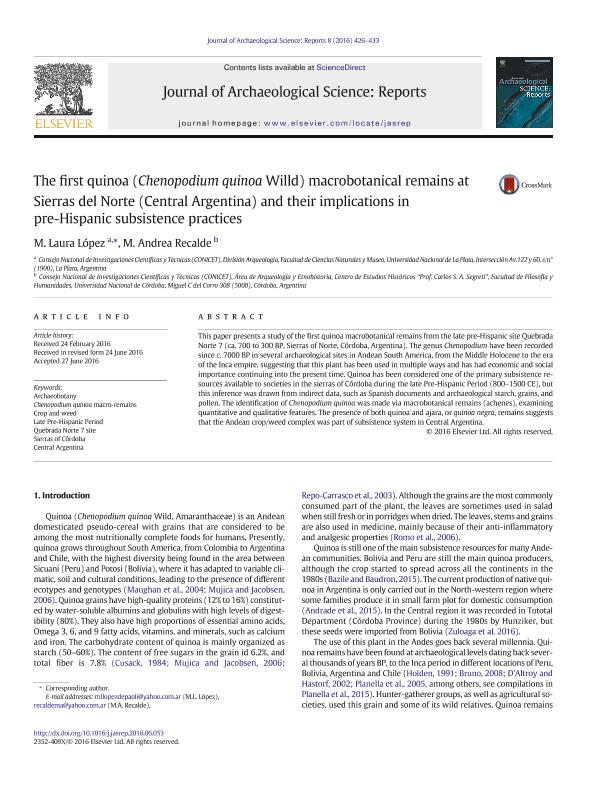Artículo
The first quinoa (Chenopodium quinoa Willd) macrobotanical remains at Sierras del Norte (Central Argentina) and their implications in pre-Hispanic subsistence practices
Fecha de publicación:
08/2016
Editorial:
Elsevier Science
Revista:
Journal of Archaeological Science: Reports
ISSN:
2352-409X
Idioma:
Inglés
Tipo de recurso:
Artículo publicado
Clasificación temática:
Resumen
This paper presents a study of the first quinoa macrobotanical remains from the late pre-Hispanic site Quebrada Norte 7 (ca. 700 to 300 BP, Sierras of Norte, Córdoba, Argentina). The genus Chenopodium have been recorded since c. 7000 BP in several archaeological sites in Andean South America, from the Middle Holocene to the era of the Inca empire, suggesting that this plant has been used in multiple ways and has had economic and social importance continuing into the present time. Quinoa has been considered one of the primary subsistence resources available to societies in the sierras of Córdoba during the late Pre-Hispanic Period (800–1500 CE), but this inference was drawn from indirect data, such as Spanish documents and archaeological starch, grains, and pollen. The identification of Chenopodium quinoa was made via macrobotanical remains (achenes), examining quantitative and qualitative features. The presence of both quinoa and ajara, or quinoa negra, remains suggests that the Andean crop/weed complex was part of subsistence system in Central Argentina
Archivos asociados
Licencia
Identificadores
Colecciones
Articulos(CCT - LA PLATA)
Articulos de CTRO.CIENTIFICO TECNOL.CONICET - LA PLATA
Articulos de CTRO.CIENTIFICO TECNOL.CONICET - LA PLATA
Citación
Lopez, María Laura; Recalde, Maria Andrea; The first quinoa (Chenopodium quinoa Willd) macrobotanical remains at Sierras del Norte (Central Argentina) and their implications in pre-Hispanic subsistence practices; Elsevier Science; Journal of Archaeological Science: Reports; 8; 8-2016; 426-433
Compartir
Altmétricas




